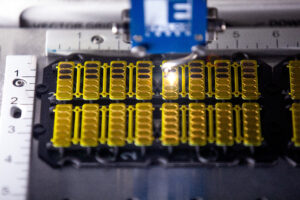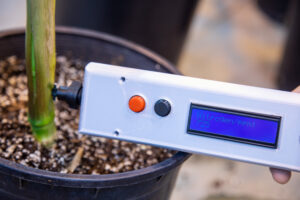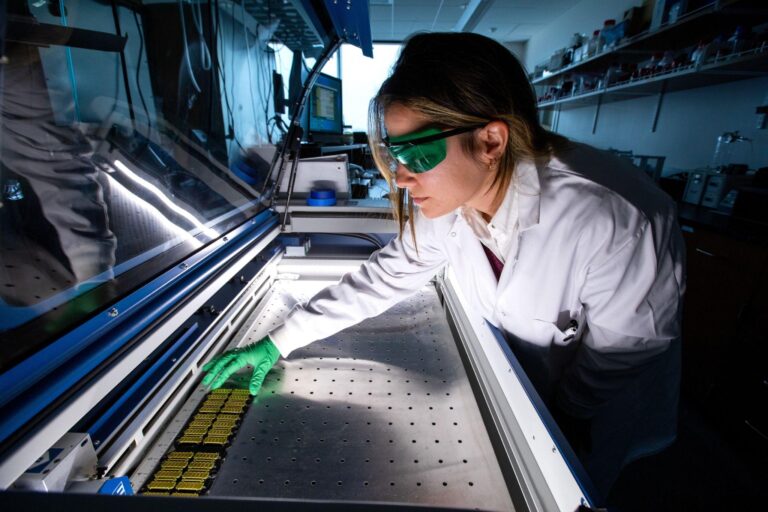
Featured Research

Farmers need reliable data collection of soil nutrient levels to optimize fertilizer use. The Nutriprobe sensor, developed in part by Carmen Gomes and Jonathan Claussen at VRAC, provides accurate readings and increases the profitability and sustainability of agriculture.
Soil nutrient levels, specifically for nitrogen, are hard to predict year-to-year as compared to other factors like weather. Applying too much fertilizer can cause harmful runoff into nearby water sources and be expensive for farmers. In fact, fertilizer is the highest input cost for farmers.
Inexpensive sensors have the capability to address both issues of input cost and environmental impact of agriculture. This project is an example of how digital agriculture is shaping how farmers use information to increase productivity.
The VRAC research team, led by Carmen Gomes and Jonathan Claussen from Mechanical Engineering, partnered with Van Wall Equipment, an Iowa-based John Deere equipment dealer. One of Van Wall’s existing moisture probes was modified with sensors developed from the Gomes and Claussen team to create the Nutriprobe, which can monitor nitrate and ammonium, both important compounds that plants collect from the soil. Once installed, the Nutriprobe can remain in the soil for an entire season. The partnership with Van Wall has provided indispensable industry insight so that the Nutriprobe can move from the lab and into the hands of farmers.
One of the biggest steps in the sensor’s production is creating graphene. A laser engraver can do this by etching plastic circuit boards. After creating the graphene, an ion-selective membrane is added. The selective membranes repel all molecules except for the nitrate and ammonium ions, which are the nutrients of interest for these sensors. The sensors measure the voltage that passes through the membrane that is used to determine the concentration of the two ions. Cost per unit is currently less than $1 dollar per unit, and Gomes and Claussen are continuing to drive this down.
The Nutriprobe will help farmers drive down costs while simultaneously mitigating environmental issues in agriculture.
